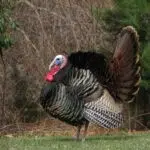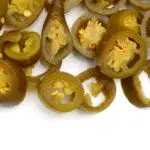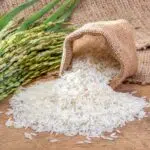National Pomegranate Month, observed in November, is an international celebration of the pomegranate plant. The pomegranate plant, botanically named “Punica granatum,” is a fruit-bearing deciduous shrub that grows between 16 and 33 feet tall. It originated from the Earth’s Mediterranean region, which comprises countries like Spain, Gibraltar, France, and so on. The plant was first introduced to Spanish America in the late 16th century, and later to the United States of America after the Spanish settlers arrived in 1769. The fruit blooms between October and February in the Northern Hemisphere, and between March and May in the Southern Hemisphere. Pomegranates can be used in a variety of ways, including baking, cooking (as garnish), and cocktails (juice, alcoholic beverages, and more). They are commonly farmed in the Middle East and other regions, such as Central Asia and tropical Africa.
History of National Pomegranate Month
The pomegranate plant is native to a region between modern-day Iran and Northern India. They have been cultivated for thousands of years in the Middle East, South Asia, and the Mediterranean region. It is also cultivated in the Central Valley of California and Arizona through its introduction by the Spanish settlers. Pomegranates were one of the first fruit plants to be domesticated in the eastern Mediterranean region, probably dating back to 5000 B.C.
In the early Bronze Age, the carbonized exocarp of the pomegranate was identified. A large, dry pomegranate was once discovered in the tomb of Djehuty, who was the butler of Ancient Egypt’s Queen Hatshepsut. Other archeological discoveries of pomegranate remains from the Late Bronze Age have primarily been in elite residences, implying that it may have been considered a luxury item.
John Tradescant the Elder introduced the pomegranate as an exotic plant to England, however, it was repeatedly reintroduced to the American colonies because it did not originate from England. It was successful in the southern United States, where in 1764, John Bartram received a barrel of pomegranates and oranges from a correspondent in Charleston, South Carolina. In September 1765, he ate pomegranates with Noble Jones at the Wormsloe Plantation near Savannah, Georgia, in Colonial America.
The pomegranate plant is also widely grown in southern China and Southeast Asia, where it is distributed along the historic Silk Road trade route or imported by sea traders. Kandahar is well-known in Afghanistan for producing high-quality pomegranates.
National Pomegranate Month timeline
The pomegranate is introduced to Spanish America.
John Bartram receives a barrel of pomegranates in Charleston, South Carolina.
Pomegranate is introduced to California by the Spanish settlers.
John Bartram receives pomegranates once again, this time from George Whyte of Williamsburg.
National Pomegranate Month FAQs
What time of the year is best for pomegranates?
The best pomegranates are from California, the United States. These fruits are in season from September and throughout November.
Where are pomegranates from?
Pomegranates are native to the Middle East and are widely cultivated there.
Are pomegranates fruits?
Yes. Pomegranates are classified as berries, and they are, in fact, super fruits!
National Pomegranate Month Activities
Eat some pomegranate
Making it a point to eat at least one pomegranate fruit every day during National Pomegranate Month is a good idea. Not only is this fruit tasty, but it also promotes a healthy body.
Make a pomegranate drink
You could make some juice, a smoothie, or even a local alcoholic beverage with pomegranate. The important thing is to get creative with it.
Plant some pomegranate
This is your chance to plant some pomegranates. Get your gardening gloves and equipment and take advantage of this November!
5 Facts About Pomegranates
It means “apple with many seeds”
The word ‘pomegranate,’ translates to ‘an apple with many seeds.’
It is native to the Middle East
Pomegranates are native to the Middle East and originated there.
Pomegranates are berries
Pomegranates are members of the berry family.
Pomegranates are a “super fruit”
Pomegranates are considered a super fruit for their nutritional value.
They can be refrigerated for two months
Pomegranates can last in the refrigerator for up to two months.
Why We Love National Pomegranate Month
They have a high nutritional value
Pomegranates are popular because of their great nutritional content. They are so nutritionally dense that they are considered a super fruit and a very healthy alternative.
Pomegranates are versatile
Pomegranates can be eaten as fruits or as meal garnishes. They can also be made into drinks, smoothies, etc.
Pomegranates are easily accessible
Nearly every supermarket stocks pomegranates. And even if they are out of stock, you can plant some pomegranate seeds in your backyard and grow your own.
National Pomegranate Month dates
| Year | Date | Day |
|---|---|---|
| 2025 | November 1 | Saturday |
| 2026 | November 1 | Sunday |
| 2027 | November 1 | Monday |
| 2028 | November 1 | Wednesday |
| 2029 | November 1 | Thursday |






















































































